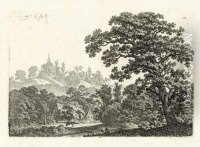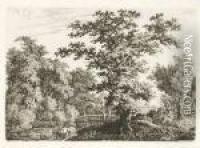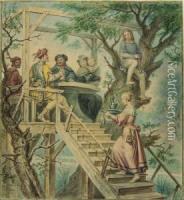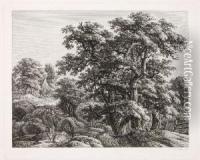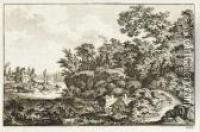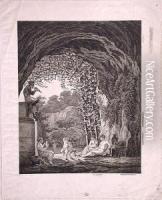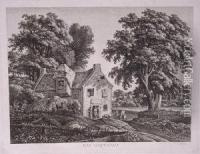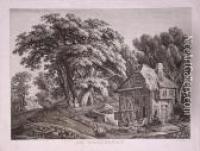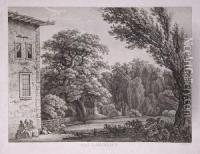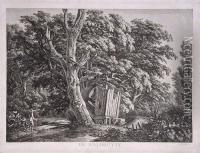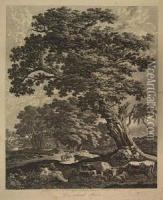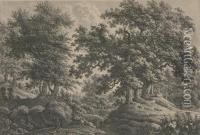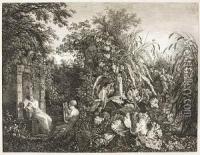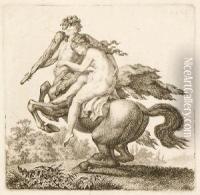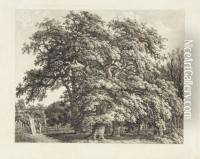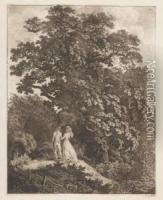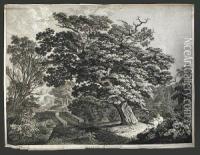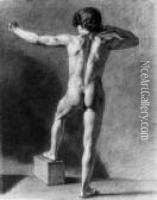Carl Wilhelm I Kolbe Paintings
Carl Wilhelm Kolbe the Elder, born in 1759 in Berlin, was a German etcher and drawer known for his pastoral landscapes and detailed depictions of plants and trees. Kolbe initially trained as a lawyer but soon shifted his focus to art. He was particularly influenced by the Dutch landscape artists of the 17th century, as well as the French artist Claude Lorrain.
Kolbe's style is characterized by its romantic sensibility and a strong emphasis on nature. He often depicted idyllic scenes with shepherds and classical ruins, which were typical of the romantic era's idealized view of the countryside. Kolbe's work was distinguished by the intricate detail of the flora in his compositions, which he rendered with exceptional accuracy and sensitivity.
Throughout his career, Kolbe became known for his unique etchings, which were referred to as 'Blätter' (leaves) due to their focus on foliage. His technique involved a combination of etching and aquatint, which allowed him to achieve a rich variety of tones. This was particularly effective in capturing the lush textures of the natural world.
Despite living through times of great political upheaval, including the Napoleonic Wars, Kolbe's work remained pastoral and serene. His landscapes provided an escape into an unspoiled natural world, which resonated with contemporary audiences seeking respite from the rapid changes of the era.
Kolbe continued to work and teach in Berlin until his death in 1835. His legacy includes a significant contribution to the German romantic movement in art, and his works continue to be appreciated for their beauty and detailed representation of nature.
